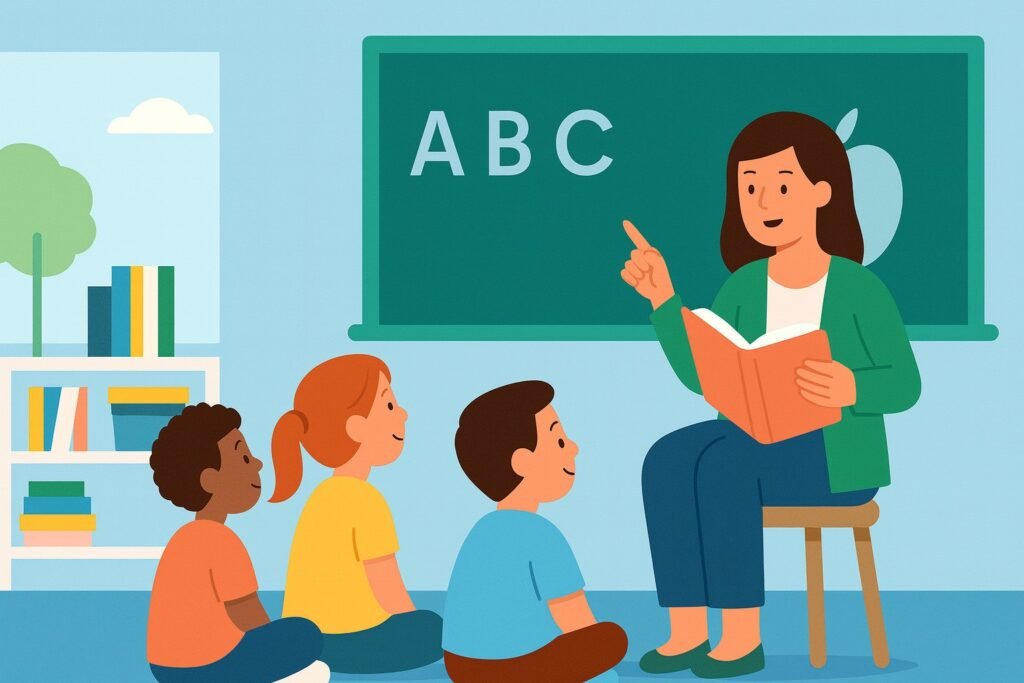Few education debates spark as much passion as the one around universal pre-kindergarten (pre-K). Across the United States, parents, educators, and policymakers are grappling with questions about how to give young children the best possible start. While kindergarten through 12th grade has long been standard, early childhood education remains uneven, depending largely on a family’s income, location, or access to private programs.
In recent years, momentum has grown for states to expand or fully fund universal pre-K programs. Advocates point to decades of research showing the profound benefits of early learning—stronger literacy, math readiness, and social skills. Skeptics often raise concerns about cost, logistics, and whether large-scale programs can maintain quality.
This article explores the benefits of universal pre-K, funding models across the country, and state-by-state policy updates. It provides an in-depth look at the opportunities and challenges of making pre-K a universal right in the United States.
Why Early Learning Matters
Brain Development in the Early Years
Neuroscience research shows that more than 80% of a child’s brain development occurs before age five. These years lay the foundation for cognitive, emotional, and social growth. Structured early learning environments provide:
- Language exposure that strengthens literacy skills.
- Mathematical reasoning through play and problem-solving.
- Social-emotional development such as self-control, cooperation, and resilience.
Long-Term Outcomes
High-quality pre-K has been linked to:
- Higher rates of high school graduation.
- Reduced need for special education.
- Increased earnings in adulthood.
- Lower rates of crime and incarceration.
While not every program achieves the same results, the evidence suggests that early investments pay long-term dividends for both individuals and society.
The Economic Case for Universal Pre-K
Return on Investment
Economist James Heckman’s research shows that every dollar invested in early childhood education can yield a return of $7 to $13, depending on program quality. These savings come from reduced remedial education, lower social service costs, and higher tax revenue from more productive adults.
Workforce Benefits
Universal pre-K also supports today’s workforce. Affordable, reliable early education allows parents—especially mothers—to stay in the workforce, increasing household income and strengthening local economies.
Balancing Short-Term Costs
Despite long-term benefits, the upfront cost of universal pre-K is substantial. States must fund facilities, staff, curriculum development, and oversight. Annual estimates range from $8,000 to $12,000 per child, depending on location and program design.
Funding Models Across the US
States and cities have taken varied approaches to funding universal pre-K:
- General State Funding: Some states, like Oklahoma, integrate pre-K into the public education system, funded through state tax revenue.
- Local Tax Initiatives: Cities such as Denver and San Antonio passed local tax measures specifically to fund pre-K.
- Federal-State Partnerships: Programs like Head Start and Preschool Development Grants supplement state efforts, though coverage is not universal.
- Mixed-Delivery Systems: Many states combine public schools, private centers, and community-based organizations to offer services.
This patchwork approach underscores the lack of a consistent national policy, leaving access and quality uneven.
State-by-State Policy Updates
Oklahoma: A Pioneer in Universal Pre-K
Oklahoma has offered universal pre-K since 1998. Participation rates hover around 70%, and evaluations show strong outcomes in literacy and math readiness. Its program is often cited as a national model.
Florida: Broad Access, Mixed Quality
Florida provides voluntary pre-K for all four-year-olds, funded through state lottery revenue. While access is strong, critics argue that per-pupil funding is too low to maintain high program quality.
New York City: A Municipal Success Story
Launched in 2014, NYC’s universal pre-K program expanded rapidly to serve tens of thousands of children. It is considered a case study in scaling early learning quickly, though funding and classroom quality remain points of debate.
Georgia: Lottery-Funded Pre-K
Georgia was one of the first states to implement universal pre-K, funded through lottery dollars. Participation is high, but similar to Florida, funding per child has struggled to keep pace with inflation and demand.
Recent Expansions
- California has committed to universal transitional kindergarten for all four-year-olds by 2025.
- Colorado rolled out a new universal pre-K program in 2023, offering 15 hours a week for all four-year-olds.
- New Mexico passed legislation in 2022 dedicating a portion of its state’s oil and gas revenues to fund early childhood education.
Challenges in Implementation
Ensuring Program Quality
Access without quality may not deliver the promised outcomes. Key quality factors include:
- Teacher qualifications and pay parity with K–12 educators.
- Small class sizes and low student-teacher ratios.
- Research-based curriculum aligned with child development.
Workforce Shortages
A major hurdle is the shortage of qualified early childhood educators. Low wages and demanding conditions contribute to high turnover, undermining stability.
Equity Concerns
Even with universal programs, disparities persist. Rural communities often lack facilities, while urban centers may struggle with overcrowding. Ensuring equitable access requires careful planning.
Political and Fiscal Pressures
Universal pre-K requires sustained political will. Shifting administrations or budget crises can jeopardize funding, leaving families uncertain.
Policy Innovations Worth Watching
- Blended Classrooms: Some districts mix pre-K and kindergarten students, easing transitions and maximizing resources.
- Public-Private Partnerships: States collaborate with nonprofits and private providers to expand access without building entirely new systems.
- Performance-Based Funding: Programs in states like Minnesota tie funding to measurable outcomes, rewarding quality and accountability.
The Future of Universal Pre-K
As debates continue, universal pre-K is increasingly viewed not as a luxury but as a necessity. Policymakers recognize that failing to invest in early childhood can widen achievement gaps and undermine economic competitiveness.
Whether the United States moves toward a federal guarantee or continues with state-led experimentation remains to be seen. What is clear is that the momentum is strong—and families are demanding solutions.
Universal pre-K sits at the intersection of education, economics, and social policy. The benefits are clear: stronger learning outcomes, reduced inequality, and long-term economic returns. The costs are also undeniable, requiring billions in sustained investment and a robust early education workforce.
States like Oklahoma and New York City prove that universal access is possible, while newer programs in California and Colorado signal a growing wave of expansion. Still, the challenge is not just scaling access but ensuring quality. Without well-trained teachers, adequate funding, and equitable distribution, the promise of universal pre-K can fall short.
For working families, universal pre-K is more than policy—it’s peace of mind, opportunity, and a stronger foundation for their children’s futures. The question is no longer whether the nation can afford universal pre-K, but whether it can afford to go without it.
FAQs:
Q1. What is universal pre-K?
Universal pre-K is a publicly funded program designed to make pre-kindergarten available to all children, regardless of family income.
Q2. How much does universal pre-K cost per child?
Estimates range from $8,000 to $12,000 annually per child, depending on the state and quality of the program.
Q3. Which states currently offer universal pre-K?
Oklahoma, Florida, Georgia, and New York City (municipally) have long-standing programs. California and Colorado are in the process of expanding access statewide.
Q4. Does universal pre-K guarantee better outcomes for all children?
High-quality programs consistently show benefits, though outcomes depend on factors such as teacher training, curriculum, and class size.
Q5. How is universal pre-K typically funded?
Funding models vary—some states rely on general tax revenue, others on lottery funds, oil revenues, or local tax initiatives.




